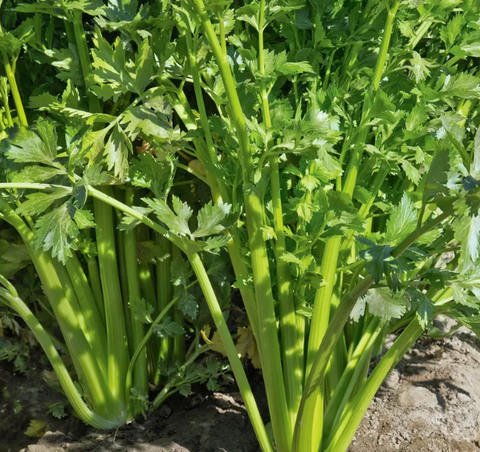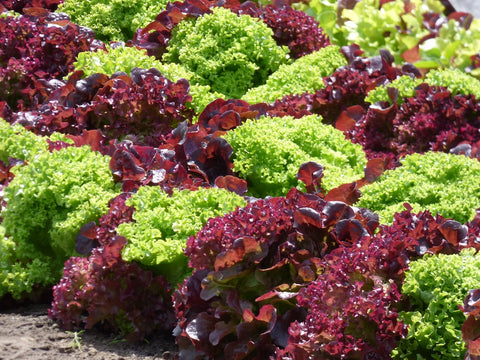Companion planting is like assembling a team of superheroes for your garden – each plant plays a unique role, working together to create a harmonious and thriving ecosystem. When it comes to sunflowers, choosing the right companions can make all the difference in their growth, health, and overall performance. In this guide, we'll explore the art of companion planting with sunflowers and discover the best plant partners to create a formidable "sunflower squad" in your garden.

- Characteristics of Sunflowers
- Benefits of Companion Planting with Sunflowers
- Best Companion Plants for Sunflowers
- Planting and Care Tips for Sunflower Companion Plants
- Designing a Sunflower Companion Plant Garden
- Common Mistakes to Avoid
- Conclusion
Characteristics of Sunflowers
Sunflowers are the bold and charismatic stars of the garden, with their towering stalks and radiant blooms that turn heads and lift spirits. Understanding their growth habits, soil preferences, and sunlight requirements is essential for selecting compatible companions to join their ranks.
Growth habits
Sunflowers are like the tall, watchful guardians of the garden, standing proud and tall with their sturdy stalks reaching for the sky. Some varieties can soar to towering heights of 12 feet or more, while others maintain a more modest stature, making them suitable for containers or smaller garden spaces.
Soil preferences
Sunflowers are not picky when it comes to soil, but they do appreciate well-drained, fertile soil with a slightly acidic to neutral pH. They thrive in loamy soil enriched with organic matter, which provides essential nutrients for robust growth and flowering.
Sunlight requirements
As sun-lovers, sunflowers crave the spotlight and thrive in full sunlight, soaking up the golden rays to fuel their growth and development. Plant them in a sunny spot where they can bask in at least six to eight hours of sunlight each day, unleashing their full potential.
Benefits of Companion Planting with Sunflowers
Companion planting with sunflowers offers a plethora of benefits that go beyond mere aesthetics, contributing to a healthier, more resilient garden ecosystem.
Pest control
Sunflowers are like natural pest repellents, emitting compounds that deter common garden pests such as aphids, whiteflies, and nematodes. By surrounding them with compatible companions, you can create a fortress against pest invasions, protecting your garden from harm.
Soil improvement
The taproots of sunflowers delve deep into the earth, breaking up compacted soil and scavenging nutrients from deeper layers, enriching the soil for themselves and their companions. Their presence improves soil structure, aeration, and drainage, creating an ideal environment for plant growth.
Enhanced pollination
The vibrant, nectar-rich blooms of sunflowers are irresistible to pollinators such as bees, butterflies, and hummingbirds, which flit from flower to flower, transferring pollen and ensuring abundant fruit sets for nearby plants. By inviting pollinators into your garden, you can boost yields and promote biodiversity.

Best Companion Plants for Sunflowers
Now that we've established the heroic qualities of sunflowers, it's time to assemble the ultimate "sunflower squad" by selecting the best companions to join forces with them in the garden.
Marigolds
Marigolds are like the loyal sidekicks of sunflowers, standing guard with their vibrant blooms and strong fragrance, which repel pests like aphids, whiteflies, and nematodes. Plant them alongside sunflowers to create a powerful defense against common garden foes.
Nasturtiums
Nasturtiums are like the dynamic duo of the garden, with their trailing vines and fiery blooms that attract beneficial insects like ladybugs and hoverflies while repelling pests such as aphids and whiteflies. Plant them at the base of sunflowers to add a touch of color and charm to the garden while promoting biodiversity.
Cosmos
Cosmos are like the cheerful companions of sunflowers, with their delicate, daisy-like blooms that dance in the breeze and beckon pollinators to the garden. Plant them alongside sunflowers to create a vibrant tapestry of color and texture that delights the senses and supports biodiversity.
Sweet Alyssum
Sweet Alyssum is like the sweet-natured friend of sunflowers, with its low-growing habit and delicate clusters of flowers that attract pollinators and beneficial insects while suppressing weeds and improving soil moisture retention. Plant them as a living mulch around sunflowers to create a lush carpet of blooms that enhances the beauty and functionality of the garden.
Lavender
Lavender is like the calming presence in the garden, with its aromatic foliage and soothing fragrance that repels pests like moths and fleas while attracting pollinators such as bees and butterflies. Plant them alongside sunflowers to add a touch of elegance and fragrance to the garden while promoting biodiversity and relaxation.
Borage
Borage is like the versatile ally of sunflowers, with its edible flowers and foliage that attract pollinators and beneficial insects while deterring pests like tomato hornworms and cabbage worms. Plant them near sunflowers to create a diverse and thriving ecosystem that supports a healthy garden.
Zinnias
Zinnias are like the colorful companions of sunflowers, with their bold, showy blooms that attract pollinators and beneficial insects while adding visual interest and variety to the garden. Plant them alongside sunflowers to create a stunning display of color and texture that enhances the beauty and biodiversity of the garden.
Radishes
Radishes are like the industrious workers of the garden, with their fast-growing roots that break up compacted soil and attract beneficial insects to the garden. Plant them alongside sunflowers to improve soil fertility and structure while supporting a healthy and thriving garden ecosystem.
Cucumbers
Cucumbers are like a refreshing addition to the garden, with their vining habit and crisp, juicy fruits that benefit from the shade provided by sunflower stalks. Plant them near sunflowers to create a functional and productive garden that provides both beauty and sustenance.
Peas
Peas are like the nitrogen-fixing wizards of the garden, with their ability to improve soil fertility and attract pollinators with their delicate blooms. Plant them alongside sunflowers to enrich the soil and support a healthy and thriving garden ecosystem.

Planting and Care Tips for Sunflower Companion Plants
Now that we've assembled our "sunflower squad," it's time to ensure their success by providing proper care and attention.
Proper spacing and placement
When planting sunflower companion plants, be sure to provide adequate spacing between plants to allow for proper airflow and sunlight penetration. Arrange them strategically to create a visually appealing and functional garden design.
Soil preparation
Prepare the soil by amending it with organic matter such as compost or aged manure to improve soil fertility and structure. Incorporate a balanced fertilizer to provide essential nutrients for healthy growth and flowering.
Watering and fertilizing guidelines
Water sunflower companion plants regularly, especially during dry periods, and fertilize them as needed to promote healthy growth and flowering. Mulch around plants to retain soil moisture and suppress weeds, reducing the need for frequent watering and maintenance.
Maintenance and pest management
Monitor sunflower companion plants regularly for signs of pests or diseases and take appropriate action to control them using organic methods when possible. Remove weeds and debris from the garden regularly to minimize habitat for pests and diseases and promote a clean and healthy garden environment.
Designing a Sunflower Companion Plant Garden
Designing a sunflower companion plant garden involves careful consideration of color, texture, height, and form to create a harmonious and visually appealing space.
Choosing complementary colors and textures
Select companion plants with colors and textures that complement the bold blooms and foliage of sunflowers for a visually stunning garden display. Mix and match different varieties to create interesting contrasts and focal points throughout the garden.
Creating visual interest with varying heights and forms
Incorporate companion plants with varying heights and forms to create depth and dimension in the garden. Arrange taller plants towards the back of the garden and shorter plants towards the front to create a sense of balance and harmony.
Incorporating edible companion plants for a functional garden
Include edible companion plants such as herbs, vegetables, and fruits to create a functional garden that provides both beauty and sustenance. Plant them alongside sunflowers to create a diverse and productive garden ecosystem that supports a healthy lifestyle.
Considering the needs of beneficial insects and pollinators
Choose companion plants that attract beneficial insects and pollinators to the garden, such as bees, butterflies, and hummingbirds. Provide habitat and food sources for these important creatures by incorporating a variety of nectar-rich flowers and flowering herbs throughout the garden.

Common Mistakes to Avoid
To ensure the success of your sunflower companion plant garden, avoid common pitfalls that can detract from its beauty and productivity.
Overcrowding
Avoid overcrowding sunflower companion plants, as this can lead to competition for resources and inhibit growth. Provide adequate spacing between plants for proper airflow and sunlight penetration, reducing the risk of disease and pest infestations.
Neglecting soil preparation
To ensure optimal growing conditions, take the time to properly prepare the soil before planting sunflower companion plants. Test the soil pH and amend it with organic matter as needed to improve soil fertility and structure, providing essential nutrients for healthy growth and flowering.
Failing to monitor for pests and diseases
Regularly monitor sunflower companion plants for signs of pests or diseases and take appropriate action to control them before they become a problem. Remove affected plants or treat them with organic pest control methods to prevent the spread of pests and diseases throughout the garden.
Ignoring the needs of companion plants
Be attentive to the specific needs of sunflower companion plants, including watering, fertilizing, and maintenance requirements. Provide the necessary care and attention to ensure their health and vitality, allowing them to thrive alongside sunflowers in the garden.
Conclusion
Companion planting with sunflowers is like orchestrating a symphony in the garden, with each plant playing a vital role in creating a harmonious and thriving ecosystem. By selecting the right companions and following proper planting and care techniques, you can create a garden that not only delights the senses but also supports biodiversity, promotes pollination, and enhances overall garden health. So gather your sunflower squad and embark on a journey to create a garden that bursts with color, fragrance, and life!









